|
Birth of a dream
As the vision of Harpal Tiwana
shapes up in the form of a centre for performing arts in Patiala,
Nonika Singh checks out his legacy
We
all have dreams.... We all aspire for many things for
ourselves, our near and dear ones. It is only the dreams of
great men, which do not revolve around I, me, myself. Decades
ago, theatre stalwart Harpal Tiwana dreamt of infusing
professionalism and exemplary standards into Punjabi theatre.
With productions like Hind Di Chaadar, Sirhind Di Deewar
and many more, he enthused among Punjabis a sense of pride in
their culture.
|
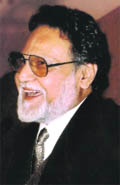
Harpal Tiwana
|
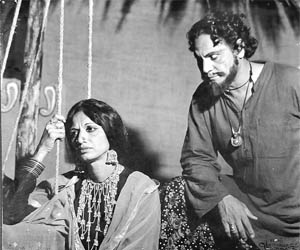
Harpal and Neena Tiwana in
Diva Bale Sari Raat |
He often wished
wistfully how he could have done more, only if he owned his own
theatre space.
Almost a decade
after his death in 2002, his wish is being fulfilled as Harpal
Tiwana Centre for Performing Arts (Kala Kendra) is all set to
open. As finishing touches are being given to the
state-of-the-art auditorium at Patiala, excitement is writ large
on the faces of the proud inheritors of his legacy. Harpalís
son Manpal Tiwana and wife Neena Tiwana share grandiose plans of
making it the throbbing hub of art and culture. But the moot
question is can a building help reclaim a legacy? Can it bring
back the audience, which once flocked his performances? Can it
bring back the exciting days in Punjabi theatre in the late
1970s and early 1980s when Harpalís productions like Diva
Bale Sari Raat, Nasha Kursi Da, et al ran full house,
ticketed ones at that, show after show often clocking 100 shows
at one go?
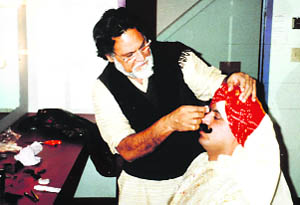
From makeup to production, Harpal was involved in all aspects of his plays |
Girija Shankar, a
well-known actor, who has worked with Harpal, agrees that a
building is only a skeleton and "we need to breathe life
into it." Pray how? Going by the earlier efforts about
Harpal Tiwana Foundation, which has been created by friends and
family in the honour of the thespian director-producer, in the
best of moments the foundation has only been sporadic in its
endeavour. It has been rather inconsistent in holding the baton
that Harpal had passed on to them.
So what can one
expect from the Kala Kendra that is essentially a government
property? Built at a cost of Rs 14.5 crore, the kendra will be
run by Harpal Tiwana Memorial Society with Neena as its resident
director and Manpal as the convener, but the Deputy
Commissioner, Patiala, will be the ex-officio president of the
day-to day governing society. Neena is a trifle circumspect that
if the government interference crosses a line, it will be
difficult to make things happen. However, the Deputy
Commissioner, Patila, Vikas Garg, insists that the governmentís
role would be restricted to providing support.
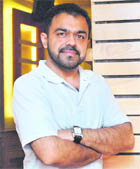
Son Manpal is the proud inheritor of Harpal Tiwana's legacy |
The society has on
board reputed personalities like ghazal maestro Jagjit Singh,
prime initiator of the project, eminent Punjabi writer Dalip
Kaur Tiwana and many others, who envisage it as a nucleus of art
and culture and not just theatre. Harpal, who was also a
consummate bhangra dancer, created seminal plays revolving
around Sikh history and culture. He also made blockbuster films Laung
Da Lishkara and Deeva Bale Sari Raat. Hence itís
only fair that a kendra set up in his memory, and it should not
just be confined to theatre. Gifted actor, Om Puri, who learnt
his first lesson in acting from Harpal, feels that the kendra
should not only organise theatre festivals and painting
exhibitions, but also host art films.
Playwright and
director, Dr Atamjit, however, wonders whether the kendra would
help further the cause of art and theatre in particular. He
observes: "In the absence of a cultural policy and concrete
government vision, I have serious reservations about the
outcome."
Theatre actor and
television anchor, Neeta Mohindra, a died-hard Harpal
aficionado, believes that the legendary theatreperson didnít
really get his due. She, too, is sceptical whether a building
named after Harpal alone can bring back the magic, which only he
was capable of. Like Dr Atamjit, she, too, believes that
governments should create such infrastructure and hand it over
to theatre persons, while they are alive and active. She adds:
"Samarak to ban hi jaate hain. The crux lies in
having energised and animated spaces."
Does that mean
buildings in the memory of artistes are hollow tributes? Not
quite. Dr Atamjit argues, "Such gestures are significant,
have an iconic value and lend dignity to the artistic community
at large. But the rider is if it works."
Even Puri agrees
that now the onus is on Manpal, who sincerely believes that the
synergy between the government and the artistic community can
work and the kendra can become a self-sustaining unit. On
fulfilling his fatherís as well as motherís dream, who hopes
to see queues outside the auditorium, he is upbeat, "If
Delhi can have India Habitat Centre, if Jaipur can have literary
festival, why canít Patiala take a lead in this region?"
"Only," he insists, "Donít prejudge. Letís
begin on a positive note." So, let time be the judge.
|
Wife
remembers
|
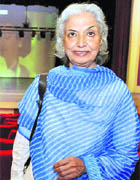
Neena Tiwana
Photo: Rajesh Sachhar
|
He could never cope
without me", chuckles Neena Tiwana, wife of Harpal
Tiwana. But then Neena, who has also penned a biography Oh
Jo Si on her other half isnít just another spouse.
His junior at the National School of Drama, she also
remained her husbandís favourite heroine. Harpal cast
her as the lead protagonist in most of his productions.
She recalls his boundless enthusiasm and unswerving
commitment. "So involved was he in his passion that
he often would enquire in the evening ó did I eat
anything in the morning?" She was enamoured by the
energetic way in which Harpal, the complete performer who
had a diploma in choreography from Visva Bharti, Kolkatt,
would guide his actors. But his trait of being a
perfectionist ó he would make his actors rehearse lines
50 times ó often annoyed her. "I would tell him ó
you imagine things from a highly exalted perspective but
you need to come down to the actorís level."
Interestingly, he didnít offer her any acting tips nor
did she ever interfere with his work. But together they
were a team that worked wonders and gifted the world of
histrionics a battery of actors like Om Puri, Raj Babbar,
Girija Shankar, Nirmal Rishi and Neeta Mohindra. |
|
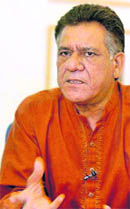 He was my
first acting guru and I hail him as the father of modern
Punjabi theatre. From him, I learnt many lessons but the
most vital is the dignity of labour. Harpal would get down
to even doing simple things like sweeping the floor, put
nails on the walls. An incredibly innovative man, he could
turn a biscuit tin into a spotlight. Once at Dagshai he
put together dining tables and made a set on the top of
it. He was my
first acting guru and I hail him as the father of modern
Punjabi theatre. From him, I learnt many lessons but the
most vital is the dignity of labour. Harpal would get down
to even doing simple things like sweeping the floor, put
nails on the walls. An incredibly innovative man, he could
turn a biscuit tin into a spotlight. Once at Dagshai he
put together dining tables and made a set on the top of
it.
ó Om Puri
 After my
first superhit song "Dil Le Gai Kudi",
when I had to face television cameras, only then I
realised how much his theatre training had helped me.
While acting for my film Khushiyan, again this
training held me in good stead. He was a stern teacher and
often pulled me up for my Gurdaspuri accent. But he was
also very giving. He was always willing to walk that extra
mile for his actors, irrespective of the background they
came from. After my
first superhit song "Dil Le Gai Kudi",
when I had to face television cameras, only then I
realised how much his theatre training had helped me.
While acting for my film Khushiyan, again this
training held me in good stead. He was a stern teacher and
often pulled me up for my Gurdaspuri accent. But he was
also very giving. He was always willing to walk that extra
mile for his actors, irrespective of the background they
came from.
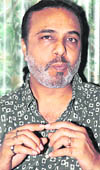 ó Jasbir Jassi ó Jasbir Jassi
He is
always a part of my prayers. Even though he hailed from a
typical agrarian family, after graduating from the
National School of Drama, he pursued theatre like a man
possessed. Sadly, today few can replicate that zeal.
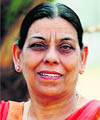 ó Girija Shankar ó Girija Shankar
I have
never come across a man so devoted to theatre. He was a
workaholic, who would eat, drink, sleep theatre. He would
make his actors rehearse from morning till evening. Even
today, I remember the dialogues of plays like Hind Di
Chaadar and Sirhind Di Deewar.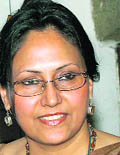
ó Nirmal Rishi
He was an
amazing man, who created technically sound productions in
times when few cared to do theatre in Punjab. Itís from
Harpal and Neena that I learnt how to approach theatre as
a profession.
ó Neeta Mohindra |
|